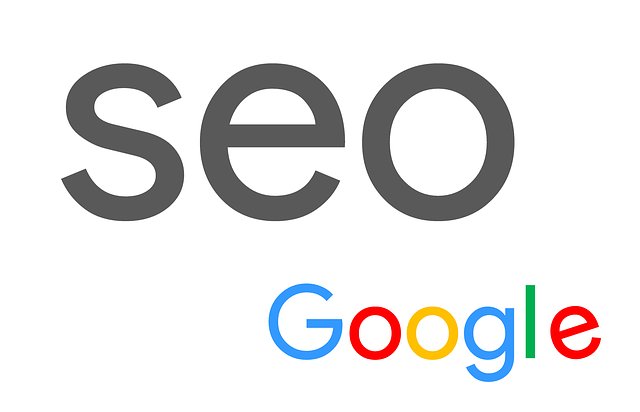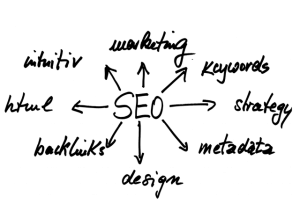Content optimization is a multi-faceted strategy within SEO, focusing on aligning website content with user search queries to improve rankings and drive organic traffic. Key steps include keyword research using tools like Google Keyword Planner or SEMrush, integrating long-tail keywords naturally into compelling, high-quality content. Enhance readability with headings, subheadings, visuals, and multimedia. Optimize on-page elements like titles, headings, meta descriptions, and alt tags for better user experience and search engine understanding. Implement technical SEO practices such as structured data markup, XML sitemaps, site speed optimization, and HTTPS security to ensure your site is accessible and trustworthy. Track content performance using analytics tools like Google Analytics to gather insights into user engagement and identify areas for improvement, continually refining your strategy based on these metrics.
Looking to boost your website’s visibility and rank higher on search engines? Content optimization is a powerful SEO tip that can drive organic traffic and engage your audience. This comprehensive guide takes you through every step of enhancing online content, from keyword research strategies to creating compelling material and optimizing technical aspects. Discover how to refine your on-page elements and leverage SEO practices to ensure your website stands out in the digital landscape.
Understanding Content Optimization for SEO

Content optimization is a vital component of Search Engine Optimization (SEO) strategy, designed to enhance your website’s visibility and attract organic traffic. It involves refining and structuring your content to align perfectly with what search users are looking for, thereby increasing its chances of ranking higher on search engine result pages (SERPs). By implementing effective SEO tips for ranking higher, you can ensure that your content not only resonates with your target audience but also aligns with the keywords and phrases they use during their online searches.
This process includes optimizing various elements such as keyword research, where you identify relevant keywords and incorporate them naturally into your content without compromising readability. It also entails crafting compelling meta tags, including title tags and meta descriptions, that accurately reflect the content while enticing users to click through. Additionally, creating high-quality, informative, and engaging content that satisfies user intent is paramount. This may involve using headings, subheadings, bullet points, and images to improve content scannability and make it more accessible for both search engines and human readers alike.
Keyword Research and Strategy

Keyword research is a crucial step in any SEO strategy, as it involves identifying the terms and phrases that potential customers use to search for products or services similar to yours. By understanding your target audience’s language and preferences, you can create content that resonates with them, leading to higher rankings on search engines. Using tools like Google Keyword Planner, SEMrush, or Ahrefs, you can uncover valuable insights into search volume, competition, and user intent behind different keywords.
A well-crafted keyword strategy should focus on long-tail keywords, which are more specific and often have less competition than their shorter counterparts. Incorporating these into your content not only helps with SEO tips for ranking higher but also provides more precise and valuable information to your audience. Additionally, it’s essential to consider user experience and the context in which keywords are used; ensuring they fit naturally within compelling, relevant content will enhance both search engine visibility and reader engagement.
Creating High-Quality, Engaging Content

Creating high-quality, engaging content is a cornerstone of successful SEO strategies. To rank higher and attract more organic traffic, focus on crafting compelling pieces that meet your audience’s needs. Utilize SEO tips for ranking higher by understanding your target keywords and integrating them naturally within your text. Ensure your content offers genuine value, whether educating, entertaining, or inspiring readers – the goal is to foster a positive user experience that encourages longer browsing sessions and lower bounce rates.
Use headings, subheadings, and bullet points to break up text and make it more digestible. Incorporate relevant images, infographics, or videos to enhance visual appeal. These elements not only improve readability but also provide additional opportunities for keywords to be spotted by search engines. Remember, quality content is the magnet that draws in readers, while effective SEO practices ensure they stick around and explore more of your site.
Optimizing On-Page Elements

When implementing SEO tips for ranking higher, optimizing on-page elements is a crucial step. This involves refining various components within your web pages to make them more relevant and engaging to search engines. One key aspect is optimizing titles and headings (H1, H2, etc.), ensuring they are descriptive and include target keywords naturally. These elements serve as the foundation for both user experience and search engine understanding of your content.
Additionally, meta descriptions and alt tags play a significant role in content optimization. Meta descriptions provide a concise summary of your page’s content, while alt tags describe images to users with visual impairments and help search engines index them properly. Regularly updating and optimizing these on-page elements can significantly impact your site’s visibility and click-through rates, ultimately enhancing your SEO strategy.
Leveraging Technical SEO Practices

In the realm of Content Optimization for SEO, leveraging Technical SEO Practices stands as a robust strategy for achieving higher rankings on search engine result pages (SERPs). These practices ensure your website is easily crawlable and accessible to search engines like Google, which are increasingly sophisticated in their algorithms. Implementing structured data markup, for instance, provides search engines with clear insights into the content of your web pages, leading to enhanced visibility and better indexing. XML sitemaps also play a critical role by offering a detailed roadmap of your site’s structure, aiding search engine crawlers in efficiently navigating through your content.
Moreover, optimizing site speed is another technical SEO tip that significantly impacts ranking potential. Faster loading times not only enhance user experience but are also favored by search engines. Compressing images, leveraging browser caching, and adopting a mobile-first indexing approach are effective ways to streamline page load speeds. Additionally, ensuring your website has a secure HTTPS connection boosts trustworthiness in the eyes of search algorithms, further contributing to better rankings under the ever-evolving SEO landscape.
Measuring and Analyzing Performance

Measuring and analyzing content performance is an essential step in any SEO strategy, offering valuable insights to refine and optimize your approach for higher rankings. Utilize analytics tools like Google Analytics to track key metrics such as page views, average session duration, and bounce rates for each piece of content. These data points provide a clear understanding of user engagement, allowing you to identify high-performing content and areas that need improvement.
By analyzing this data, you can gain valuable SEO tips for ranking higher. For instance, content with lower bounce rates indicates that users are finding the information useful and engaging, signaling to search engines that your site provides value. Conversely, pages with high bounce rates might suggest a need for better targeting keywords or improving content quality. Regularly reviewing and acting on these insights will ensure your content strategy stays aligned with user preferences and search engine algorithm updates.
